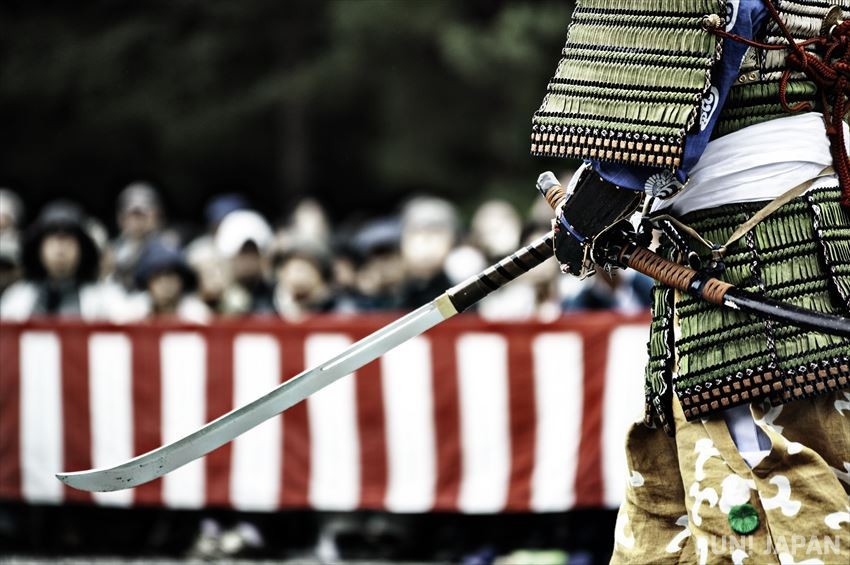
The Jidai Matsuri, youngest among the Three Great Festivals of Kyoto, is held every 22nd October in Heian Shrine in Kyoto. A procession from the Kyoto Imperial Palace to the Heian Shrine will be held. In this Kyoto autumn event, you will be able to view traditional crafts of Kyoto from each era and feel the historical atmosphere through the magnificent parade.
Summary of the Jidai Matsuri
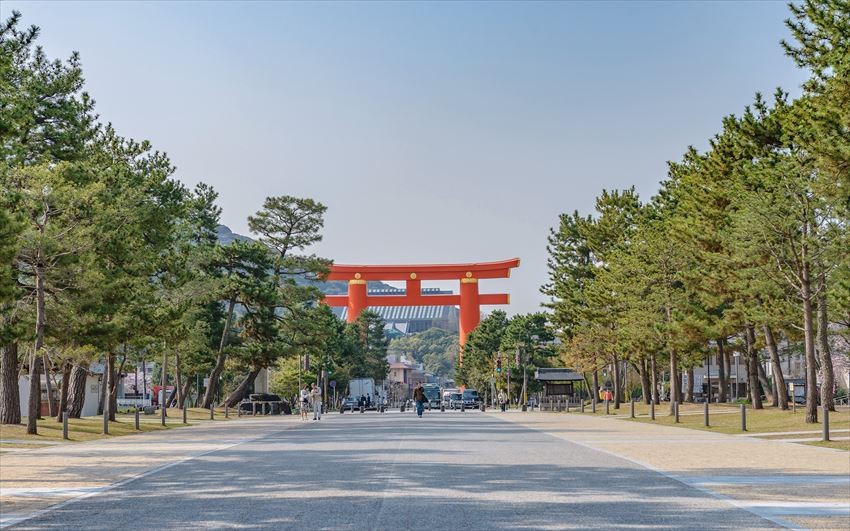
Jidai Matsuri in Japanese means the festival of the histories and is held on October 22nd every year. That day is also the anniversary of the founding of Kyoto city. Participants wear traditional cloths from different era or dress as famous people. There are about 2,000 participants marching from Kyoto Imperial Palace to the Heian Shrine. If you want to see the whole thing, it would take you about 2 hours to see it all.
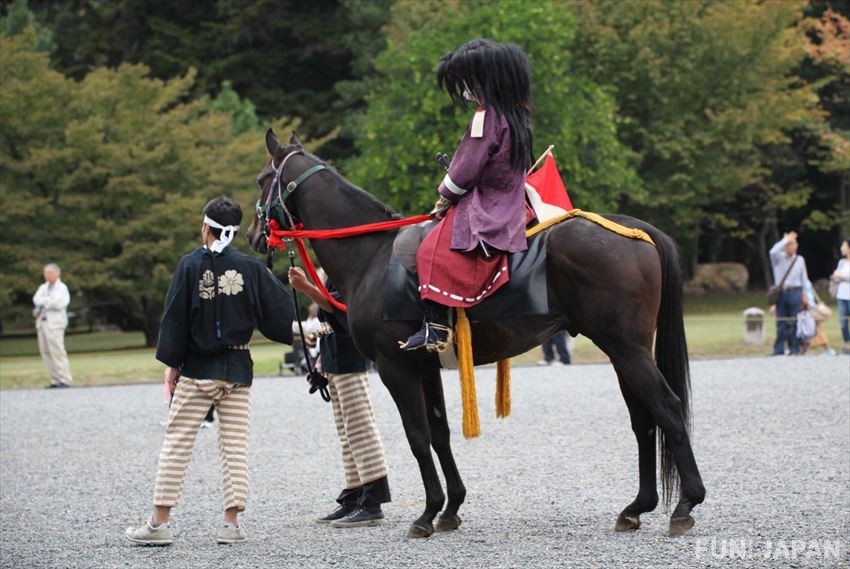
Faithfully recreating the historical dress and tools and expressing the essence of the traditional crafts, you will feel as if you have gotten on the time machine and leapt back to the old Kyoto city. It is a good opportunity to learn the characteristics of Japan’s history.
The Origin of Jidai Matsuri
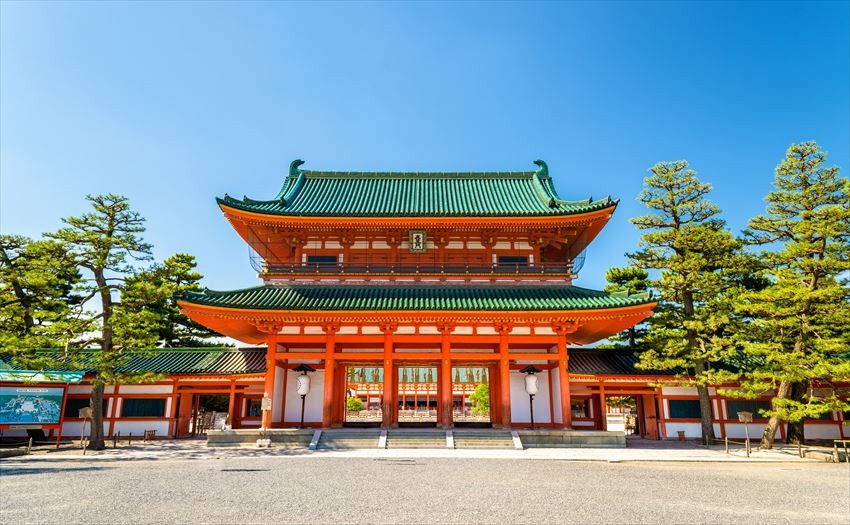
The Jidai Matsuri was organized by the head of Heian Shrine of that time in 1895 (Meiji 28) to commemorate the founding of Kyoto by Emperor Kanmu and to celebrate the 1100th anniversary of the founding of Kyoto city. In the first year, the Jidai Matsuri was held on the 25th October. The following years, it was moved to 22nd October, the day Emperor Kanmu declared Heiankyo (the previous name of Kyoto) as the capital and also the day that Kyoto was born.
To enrich the contents of the festival, there was a proposal to recreate the lifestyle and customs of the ancient city. As a result, a procession consisting of people portraying as famous people from different eras were formed, and was known as the “Jidai March”, which also resulted in the festival being named as the Jidai Matsuri.
Highlights of the Jidai Matsuri: The Procession
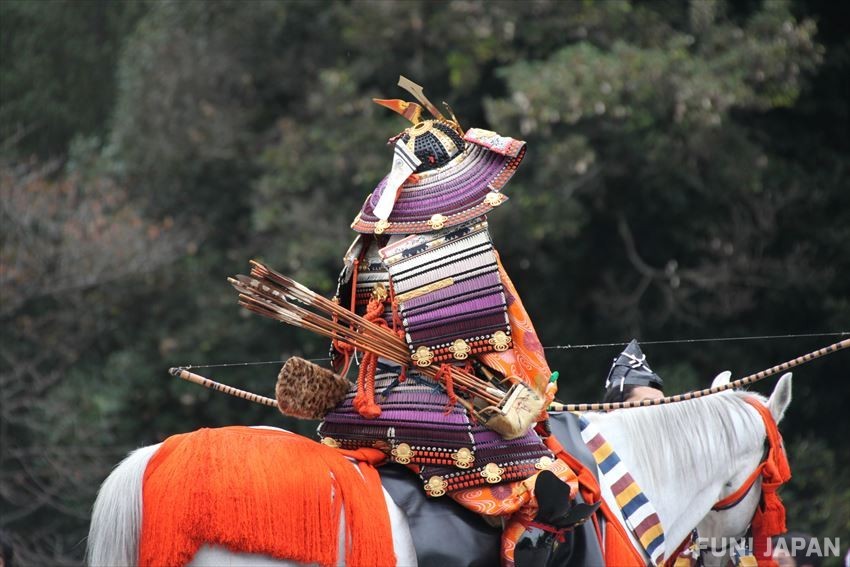
The procession of the Jidai Matsuri is a parade carried out by people dressing up in various traditional cloths from the 8 previous eras of Kyoto. The 8 eras are Meiji Restoration Period, Edo Period, Azuchi-Momoyama Period, Muromachi Period, Yoshino Period (also known as the Nanboku-cho Period), Kamakura Period, Fujiwara Period (part of the Heian Period), and Enryaku Period. It is a line up from the most recent era to the oldest era.
1. Meiji Restoration Period (明治維新時代)
- Group name: Reformation’s Imperial group (維新勤王隊列), Reformation’s patriot group (維新志士列)
- Famous characters: KATSURA Kogorou (桂 小五郎), SAIGO Kichinosuke (西郷 吉之助), SAKAMOTO Ryoma (坂本 龍馬), and other heroes.
2. Edo Period (江戸時代)
- Group name: Tokugawa castle lord group (徳川城使洛列), Women of the Edo Period group (江戸時代婦人列)
- Famous characters: Princess Kazu (younger sister of Emperor Komei)( 和宮 親子内親王), YOSHINO Tayu (a very brilliant women)(吉野大夫), IZUMO no Okuni (founder of Kabuki)(出雲阿国), etc.
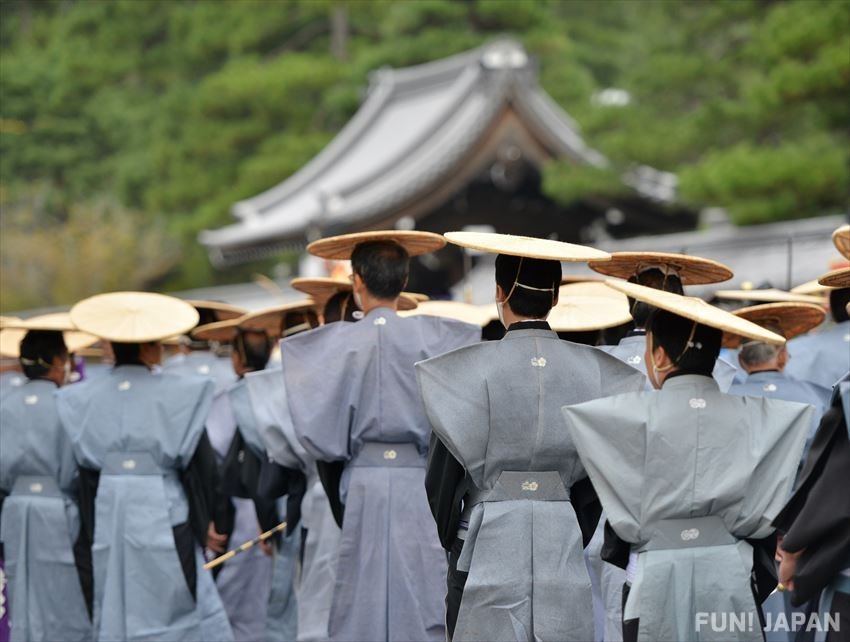
3. Azuchi-Momoyama Period (安土桃山時代)
- Group name: TOYOTOMI Hideyoshii’s palace visiting group (豊公参朝列), HASHIBA Hideyoshi (TOYOTOMI Hideyoshi’s other name)(羽柴秀吉)
- Famous Characters: Oda Nobunaga (織田信長), Hashiba Hideyoshi (羽柴秀吉), etc.
4. Muromachi Period (室町時代)
- Group name: Muromachi Shogunate Government group (室町幕府執政列), Muromachi inner group (室洛中風俗列)
- Famous character: ASHIKAGA Shogun (足利将軍), HOSOKAWA Yoriyuki (三管領の創業者), etc.
5. Yoshino Period (吉野時代)
- Group name: Kusunoki Masashige’s palace visiting group (楠公上洛列), Medieval ladies group (中世婦人列)
- Famous characters: Yodogimi (淀君)(TOYOTOMI Hideyoshi’s concubine), etc.
6. Kamakura Period (鎌倉時代)
- Group name: Jonan horseback archery group (城南流鏑馬列)
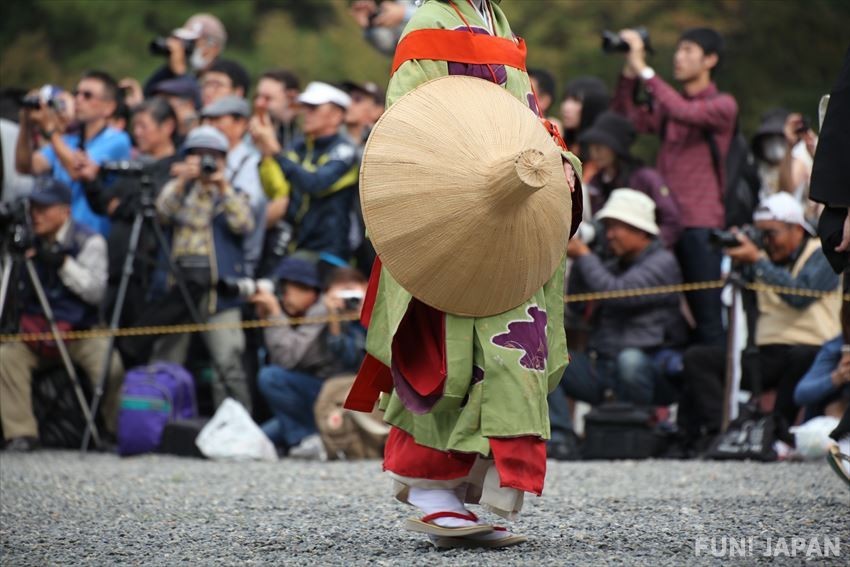
7. Fujiwara Period (藤原時代)
- Group name: Fujiwara’s public palace visiting group (藤原公卿参朝列), Heian Period’s ladies’ group (平安時代婦人列)
- Famous character: SEI Shonago (清少納言)(author of Makura no Soshi), MURASAKI Shikibu (紫 式部)(author of The Tale of Genji), etc.
8. Enryaku Period (延暦時代)
- Group name: Enryaku’s martial artist marching group (延暦武官行進列), Enryaku’s Minister’s palace visiting group (延暦文官参朝列)
- Famous character: SAKANOUE no Tamuramaro (坂上 田村麻呂) and other generals and officers
Spot Information
- Name: Kyoto Jidai Matsuri
- Location: Kyoto Imperial Palace → Heian Shrine
- Date: 22nd October
- Access:
- Kyoto Imperial Palace: 5-minute walk from the Subway Karasuma line’s Imadegawa station.
- Heian Shrine: From Kyoto station, take the Kyoto city bus #5 or the Kyoto Raku bus #100 or #110 to the “Okazaki Koen Bijutsukan Heian Jingu Mae” bus stop. It is 5-minute walk from there.
- Entry fee: Free (Reserved seats: 2050 yen)
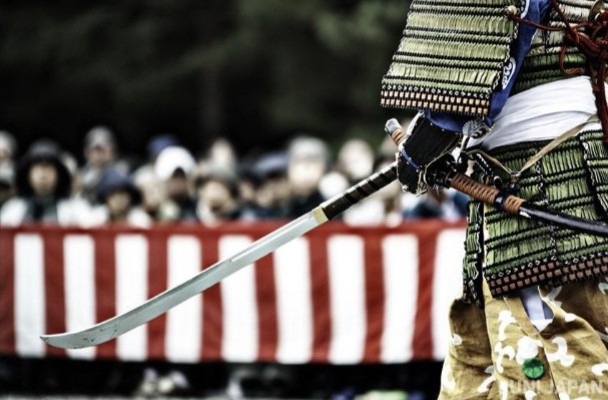
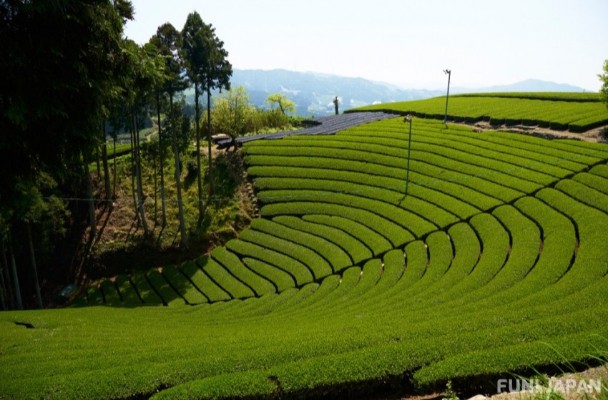
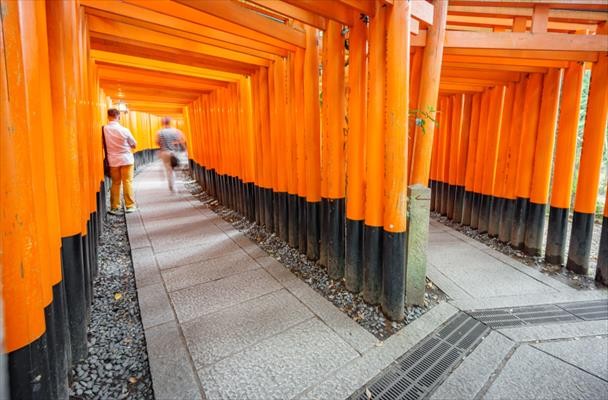
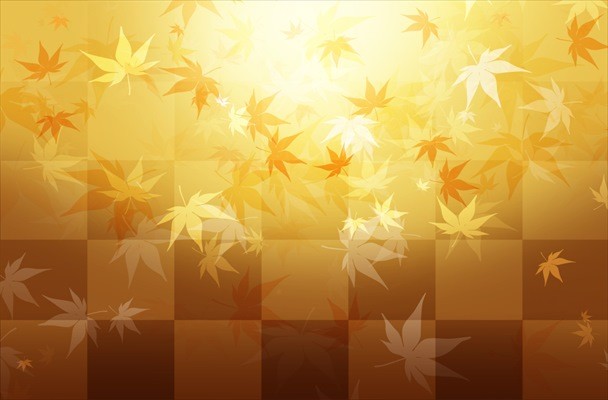
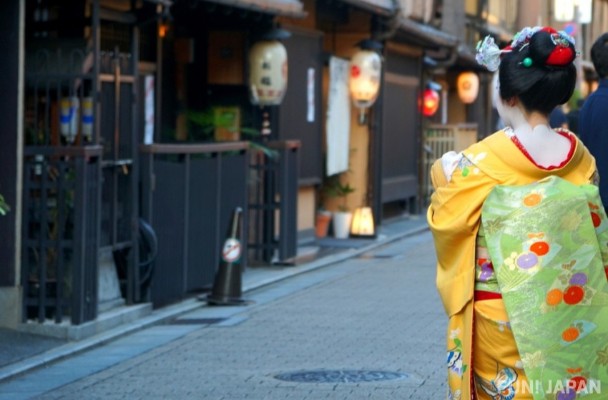
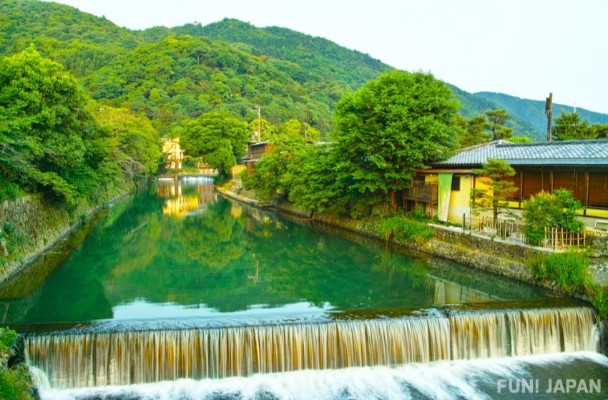
Comments